Colors, materials and the overall aesthetics often take the spot-light, while functionality takes a back seat. But storage, organization and tech-enabled appliances are as much the heart of kitchens today as cabinets and hardware.
As the overall look for kitchens becomes more cohesive, functionality might be even more important, as maintaining a sleek aesthetic requires a subtle integration of storage and dedicated zones for everything from baking to beverages. Equally transformative is a growing array of tech enhancements that promise real value for consumers. All of which ensure the most beautiful kitchen also will be up to the tasks required of the hardest-working room in the home.
“Regardless of the size of the kitchen, the main design challenge is to balance space given to appliances, storage and work surfaces,” says Mary Jo Peterson, an award-winning author, educator and designer and president of Mary Jo Peter-son Inc.
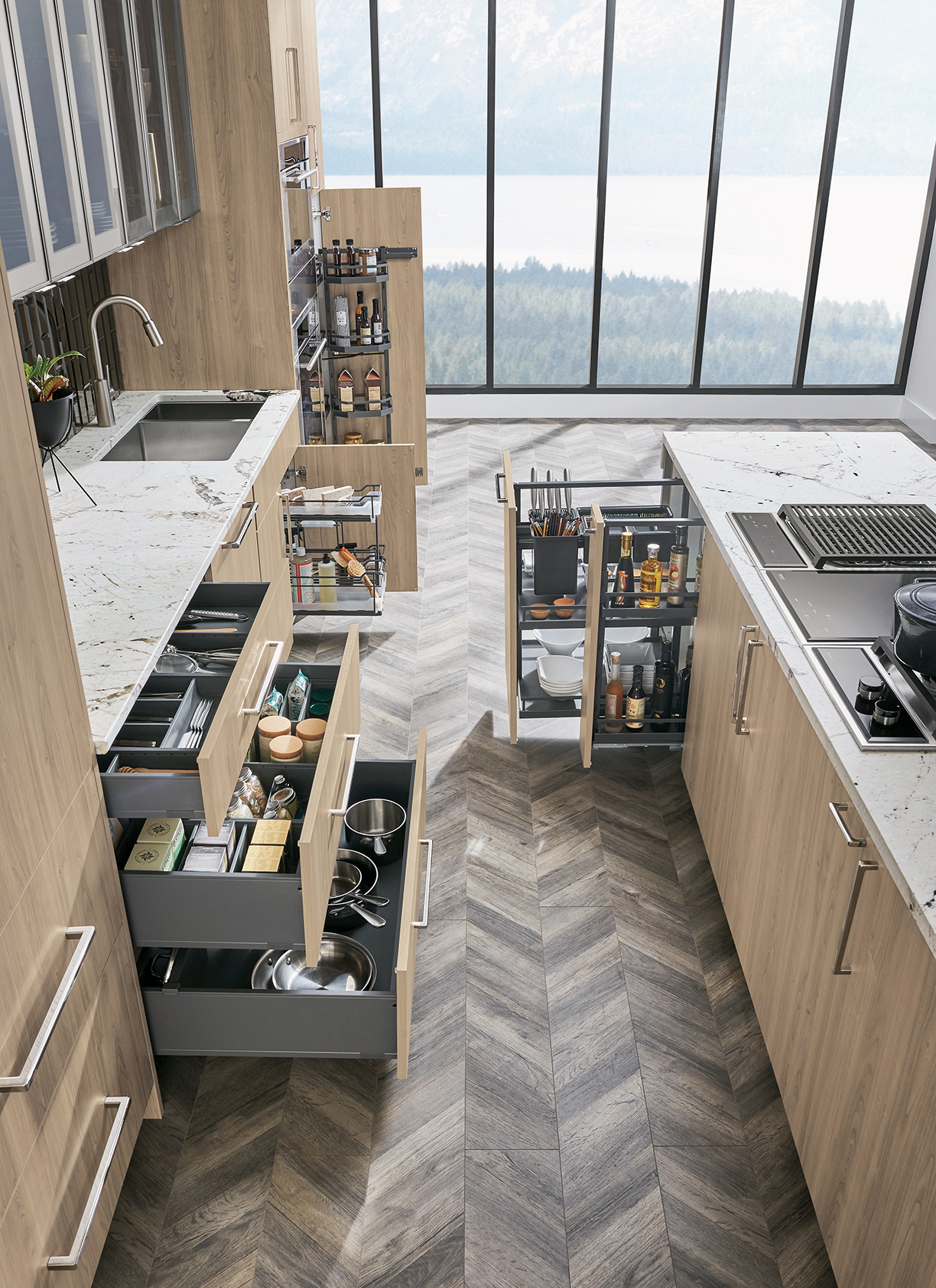
More windows and fewer walls moved storage to base cabinets. Interior storage solutions tailor a kitchen for an individual’s lifestyle and preferences. Photo courtesy of Masterbrand Cabinets.
“It’s a functional area and how your work in the kitchen is an important consideration,” says Stephanie Pierce, director of design and trends at MasterBrand Cabinets. Especially with high-end clients, she says, designers’ conversations have evolved to be more about lifestyle than appearance and style preferences. This all ties into the shift toward personalization of both aesthetics and function in homes.
In the last 10 years, she says, the industry as a whole has tripled the storage solutions offered to consumers. Additionally, there is a much greater focus on customization and adaptation for specific uses, which enables consumers to create the amount and the type of storage uniquely geared toward their use of the kitchen and their lifestyle. As an example, Pierce points to a cabinet designed specifically for dry goods. “That’s not something we would have seen five or six years ago. We would have tried to do something that was much more versatile and generic that could work with anyone’s objective.”
Amping up the need for enhanced storage and organization is an ongoing change in kitchen design. Several years ago, Pierce says, they identified an emerging trend of adding add light to kitchens with more windows and fewer walls. The end result? Storage moved to base cabinetry and, more recently, to floor to ceiling cabinets. Pull-out drawers offer the most versatility, according to Pierce, and recent research shows 79 percent of designers identified wide drawers as the top kitchen feature.
Kitchens have not only become a main place to entertain, but also a hub for a range of activities from charging devices to home-work to functioning as a home office. This is not a new trend, but Annelle Gandelman of A-List Interiors says, “lately, more peo-ple have been asking for dedicated spaces within the kitchen that cater to guests specifically. We get a lot of requests for coffee bars, butler’s pantries, and even breakfast bars filled with specialty appliances integrated into the cabinetry.”
Phil Kean sees a bar for liquor and wine gaining interest among consumers, which also moves some entertaining into areas adjacent to the kitchen. The New American Home 2019, a concept house designed and built for the home builders’ annual trade show, featured a large bar situated between the kitchen and great room that functioned both inside and outside the home. This year, Thermador introduced a dishwasher just for glasses. Kean says it’s interesting to see an appliance with such a specific function. “I think we’re going to see that more often. People might want to have a second dish-washer in their bar.”
Other specialty appliances requested for bars and beverage centers include refrigeration drawers, ice makers, instant hot faucets, drawer microwaves, convection ovens and wine refrigerators, according to Gendelman. Interestingly, one appliance that’s become a “must have” for upscale kitchens is a built-in coffee and espresso maker. Introduced at the kitchen and bath show (KBIS) this year was a faucet that delivers filtered boiling water as well as sparkling water and normal filtered water.
For high-end kitchens, the big story currently revolves around butler’s pantries and second kitchens. “We find that even people who don’t cook will invest heavily in their kitchens because it’s not just about function and food prep but also where people spend most of their time. As a result, the messier, uglier parts of a working kitchen are being moved into pantries and smaller back kitchens. These spaces are where the toaster ovens, slow cookers and ugly appliances are being hidden,” says Gendelman.
Pierce agrees. “We’re seeing fewer countertop appliances being visible,” she says. Another emerging addition to the kitchen is something Pierce calls the “walk-through pantry,” which essentially looks like a traditional cabinet door to a pantry. But open the door, and it takes you to an entire secondary kitchen that she says can be “massive.” Often it will have a sink and a second refrigerator. “It’s basically a prep kitchen that is also designed toward food storage.”
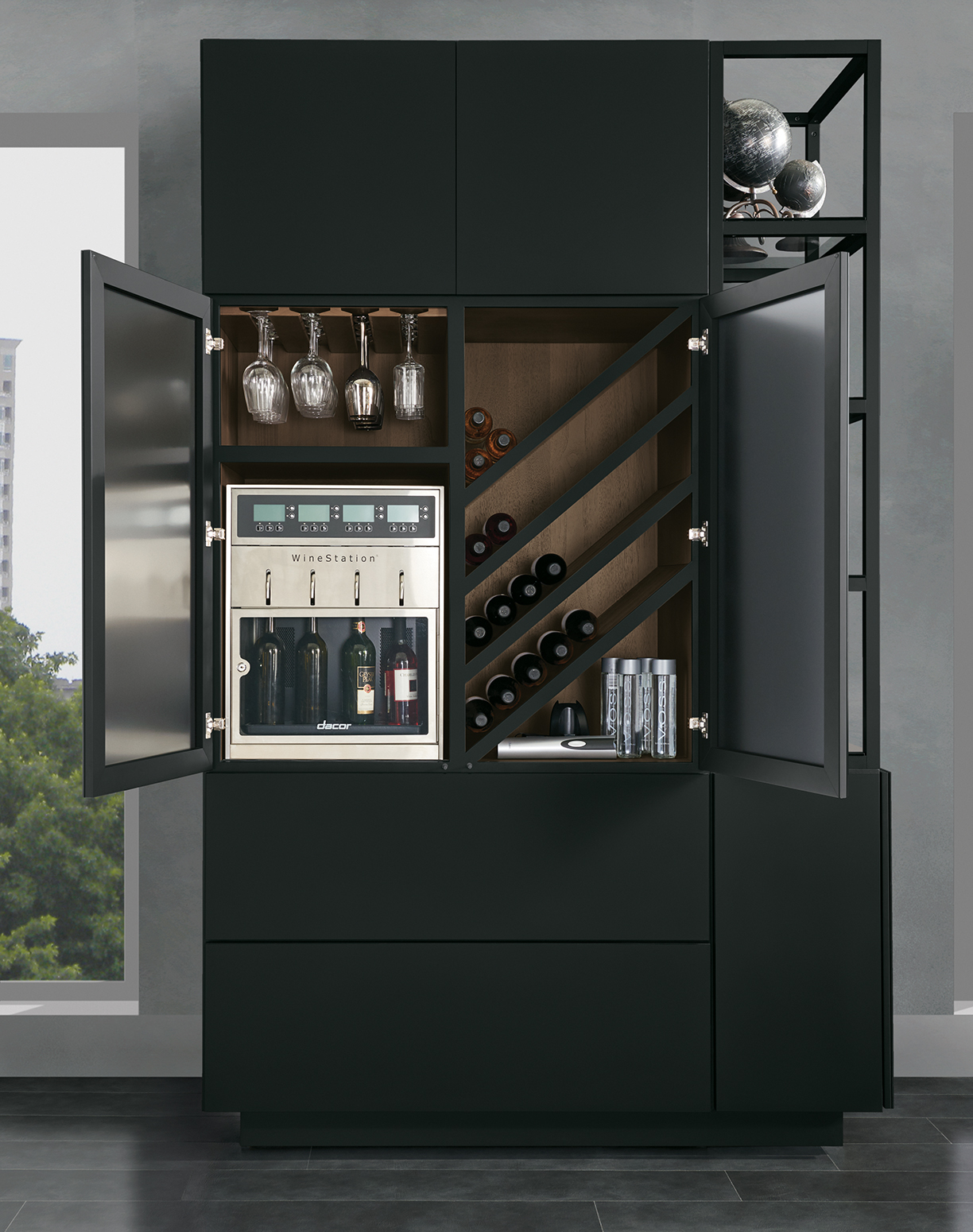
Dedicated spaces for entertaining, such as this wine cabinet, please both hosts and guests, easing congestion in the main kitchen. Photo courtesy of Masterbrand Cabinets.
“Convenience is luxury,” observes Gendelman. Motorization is a convenience, particularly in contemporary kitchens, where cabinet doors, even some appliances, open in response to a slight push. Additionally, manufacturers have introduced a range of ways to open cabinets, including doors that tilt upwards, allowing users to leave cabinets open without interfering with traffic patterns.
Consumers also see the value of technology as a way to create convenience. In research from the National Kitchen and Bath Association, 72 percent of consumers believe technology “adds market value to my home.” “Saves me time and steps” was perceived as a main benefit of kitchen technology by 70 percent of those surveyed. A majority also said kitchen tech is important because “it makes my life easier.”
In this research, consumers outpaced designers in their enthusiasm for and understanding of technology. There was strong approval and interest in smart appliances and tech solutions that enable consumers to control various aspects of the home from the kitchen, as well as solutions that make meal ideas/preparation easier and more enjoyable. Very appealing tech features for a large majority of consumers include appliances/faucets that send remote failure/leak alerts; cooking appliances that sense over-cooking or being left on; hands-free faucets with Wi-Fi interconnectivity; appliances that can be activated remotely; and sensors that can monitor/communicate food inventories in your cabinets.
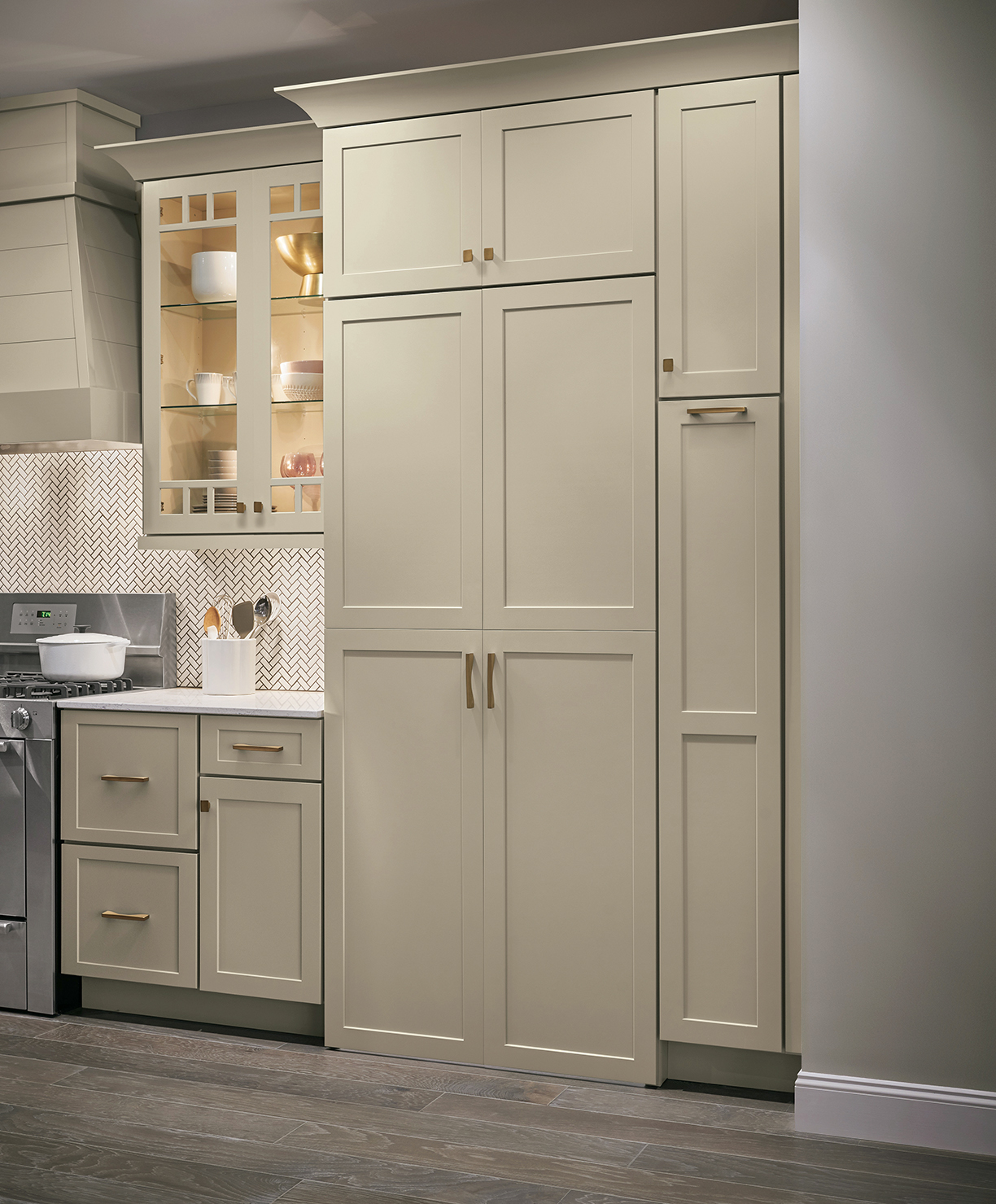
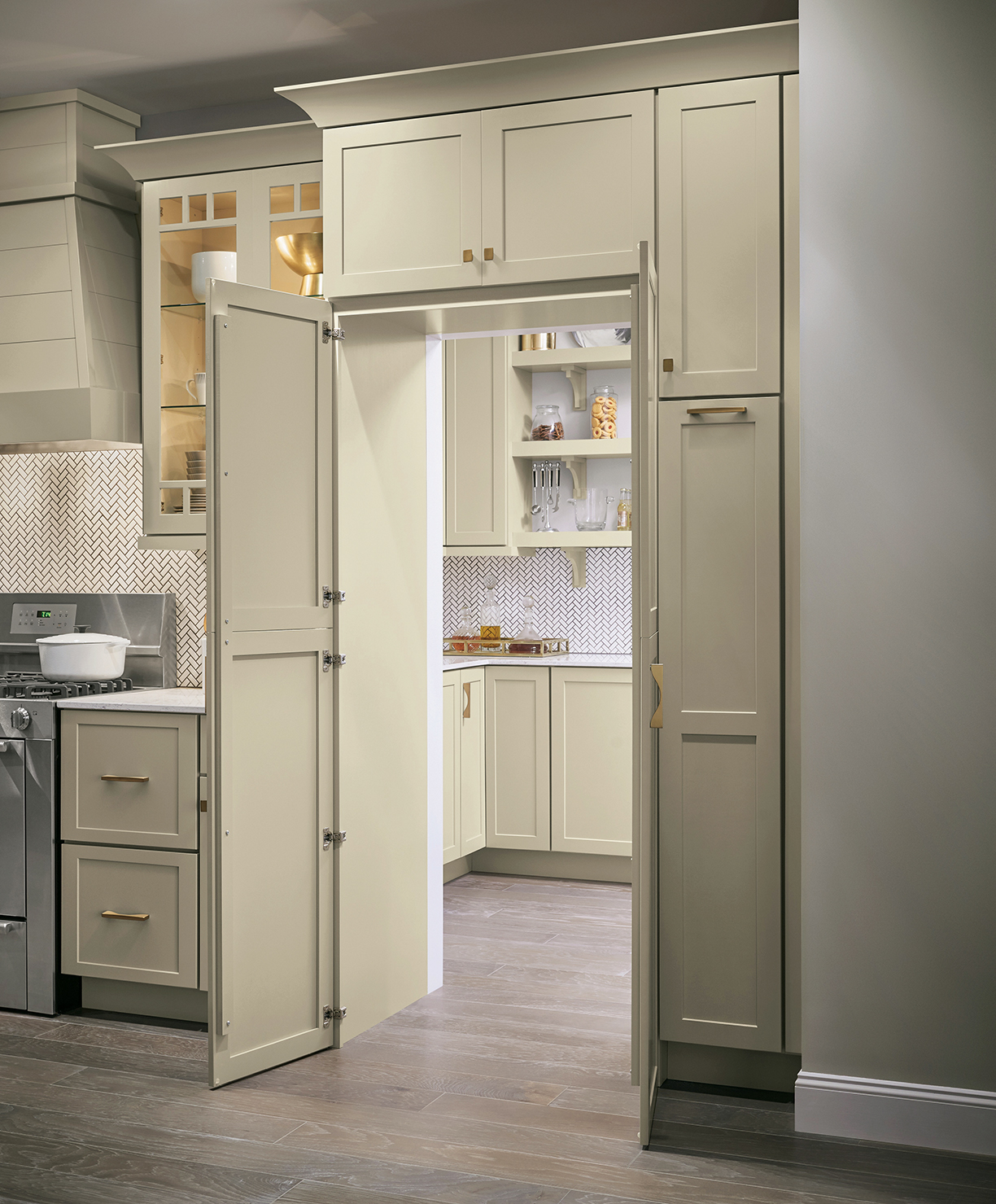
Now you see it, now you don’t. It’s the messy kitchen. Cabinet doors open to a second space for prep, storage and even cooking. Photos courtesy of Masterbrand Cabinets.
For consumers, the timing might be right. Smart-home technology has changed in only a few years, moving from a nice-but-quirky gadget to something worthwhile. “Smart is the new green” was the consensus of a trio of kitchen design exerts speaking at KBIS.
Ryan Herd is a tech veteran, NKBA industry insider and author of Join the Smart Home Revolution. He sees technology finally turning the corner, moving from a nice-to-have gadget to something offering real value to consumers. “Things are knitted together better” is his take on the cur-rent state of technology for the home and also for kitchens. Knitting together refers to ways different applications, devices and even appliances work together to produce outcomes consumers find beneficial. Some, such as the number of cooking apps integrated into appliances (highlighted at KIBS this year), are already in the marketplace. Others are on the cusp of being introduced. Appliance manufacturer Miele introduced Con@ctivity 2.0, which connects an induction cooktop with a ventilation hood. When the cooktop is turned on, the information is transmitted to the hood, which turns on. It continues to run for a few minutes after cooking is completed and then automatically turns off.
Bosch, along with Thermador and Gaggenau, introduced a line-up of voice assistants, all part of their smart, open-platform Home Connect. “All within one app, Home Connect empowers consumers to personalize the way they interact with appliances through any number of our partners and services, such as waking up to a fresh cup of coffee each day when the alarm goes off, setting the lights to flash when the washing machine cycle is finished, or selecting a recipe that will communicate with the oven to ensure it’s utilizing the right program and temperature for optimal results,” said Patrick Palacio, director of innovations for Home Connect. Partners includer Kitchen Stories, Drop and Innit. Chefling is the first AI powered kitchen assistant that provides pantry management, online shopping and recipe instruction.
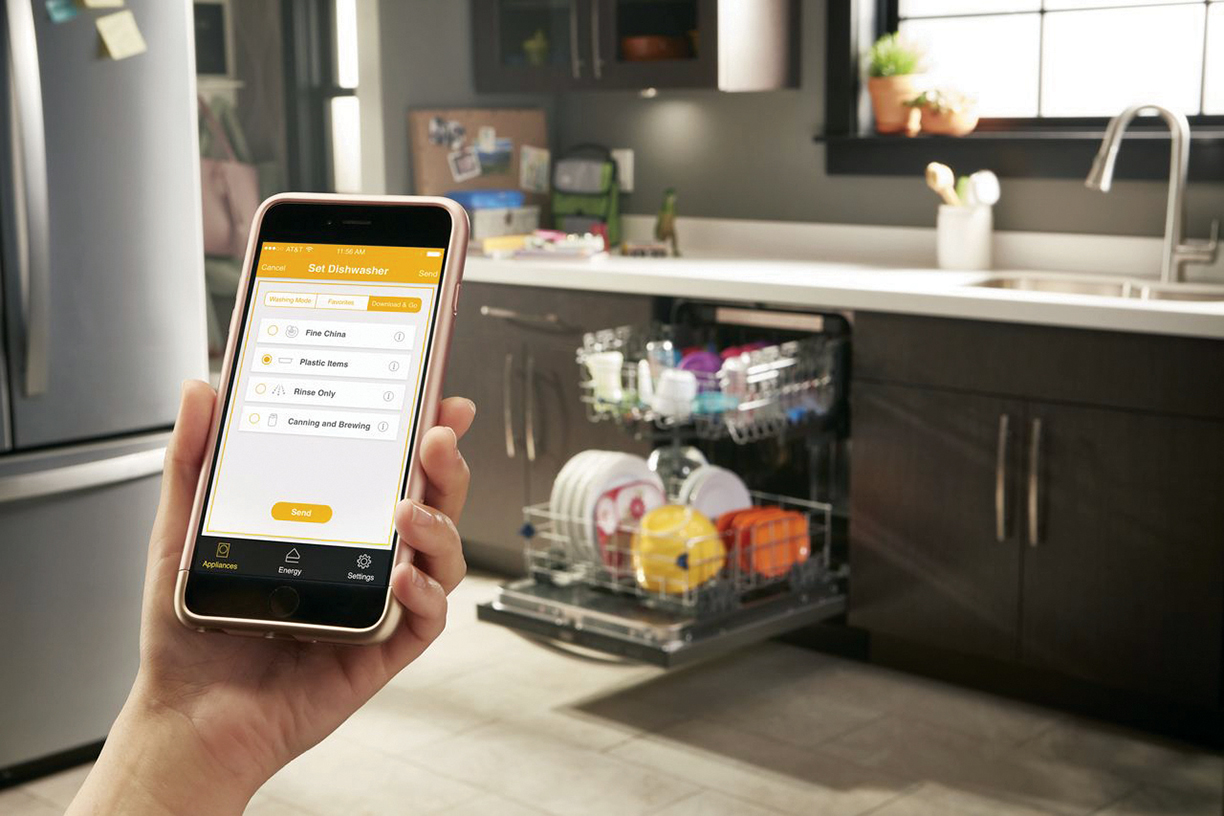
Photo courtesy of Whirlpool.
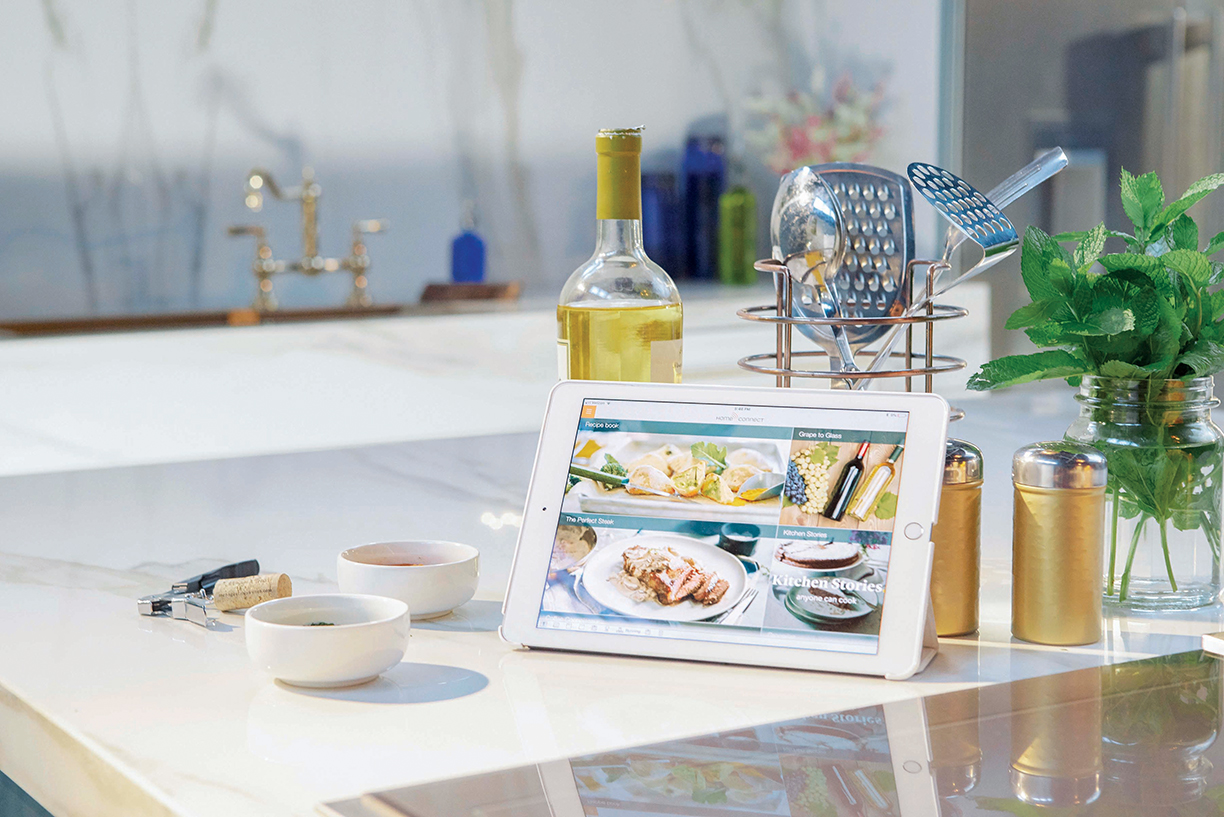
Photo courtesy fo Thermador.
Whirlpool won innovation awards at CES this year, including an innovation award in the Smart Home category for Kitchen Aid’s Smart Oven+, which includes grilling, baking and steaming within one appliance. The KitchenAid App gives status updates, and through the Yummly app users can send cooking instructions directly to the appliance. Voice control via Alexa or Google Home is another innovation.
Designers and manufacturers are look-ing for ways to remove the tangle of cords when multiple devices are being charged. Look for more ways to plug-in, with sockets and charging areas that pop up from countertops or can be installed in drawers. And also to not plug-in, using materials that charge wirelessly, such as a countertop material recently introduced by Corian.
Connectivity also means a manufacturer can detect a problem with an appliance, sometimes even before the consumer does. Herd uses the example of a wine refrigerator that has all the functions one would expect but also includes an app to scan the bottles and maintain an inventory. It has social aspects to facilitate collaboration with friends. The app also enables the manufacturer to monitor the compressor and other mechanical elements and alert consumers (along with scheduling service) if there is a problem, which Herd says is particularly valuable if you are storing $100 bottles of wine.
Winning a top award from NKBA was Flo by Moen, which detects and stops leaks from toilets, showers and faucets, to the pipes in the foundation and behind the walls. Not only does the device alert consumers to leaks, but it can then also turn off the water remotely.
In the not-too-distant future, a smart refrigerator will not only allow you to remotely see what’s inside, it will also keep an inventory that is updated every time something is added or removed. Eventually, cabinets will have a similar capability. “That’s where you get the stitching together,” says Herd. In the next step, the entire kitchen knows everything. Apps will not only keep track of what’s on hand, but they will also make meal suggestions and possibly tailor those suggestions to any specific preferences or even the allergies of guests.
Kitchens and appliances are long-term investments, and some might be reluctant to invest in technology. However, for upscale consumers it’s easy to envision a time when the convenience afforded by technology will far outweigh the cost.
Thermador, the iconic luxury home and kitchen appliance brand, is kicking off its fourth Kitchen Design Challenge, with new categories and prizes, allowing professional designers, builders, architects, remodelers, kitchen dealers and — for the first time in Thermador contest history — students to get involved.
All 44 of the regional winners will also win a trip for two to the exclusive gala in Southern California in 2020, where the national winners will be announced.
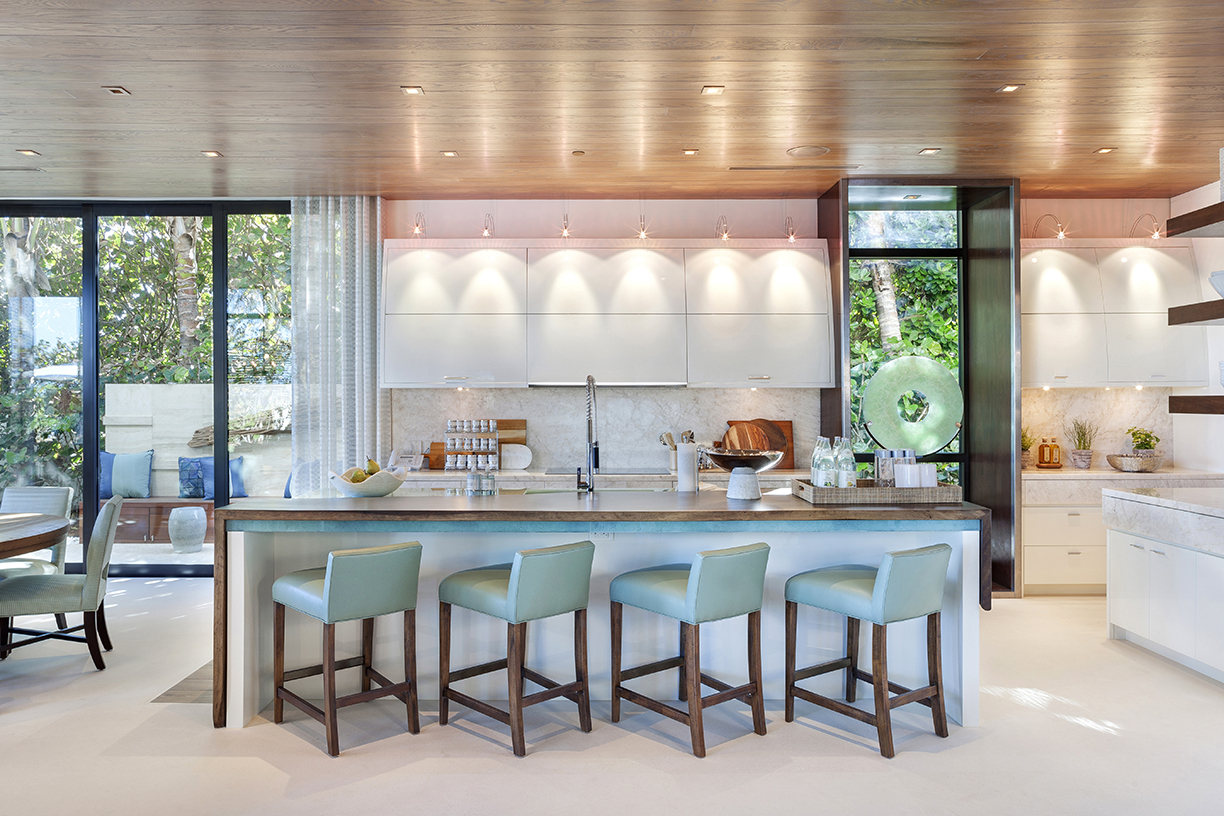
Image courtesy of Marc Thee
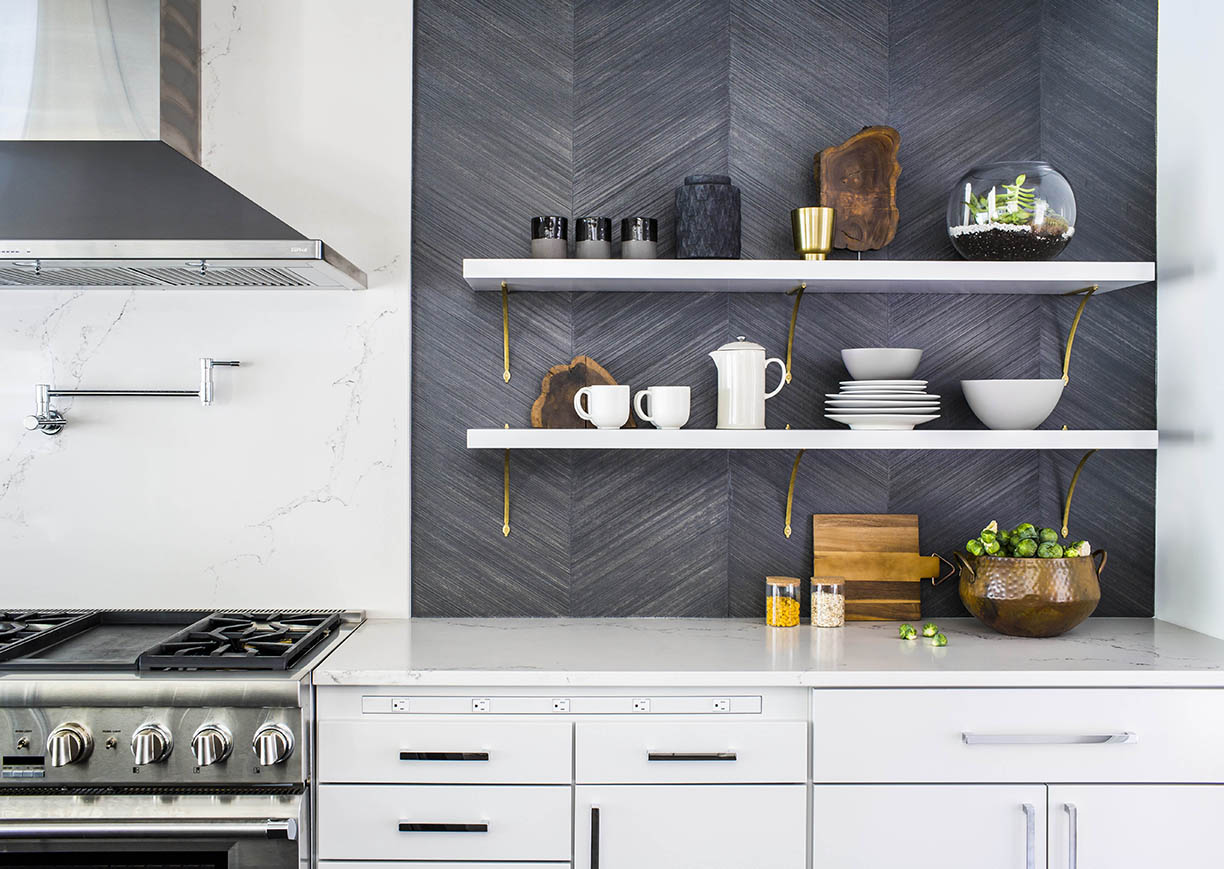
Image courtesy of Ili Hidalgo
“When it comes to marrying groundbreaking innovation and stunning design, Thermador leads the industry — empowering consumers and trade professionals to make bold statements throughout the home,” said Beatriz Sandoval, director of brand marketing for Thermador.
Encouraging the established and flourishing design-build communities to showcase their creativity in any design style, this year’s Kitchen Design Challenge aims to attract the most innovative projects yet, with four all-new categories for submission: Exceptional Kitchen, Compact Kitchen Suite, Original Innovator/Out of the Box Space and the Student Concept Kitchen.
For Exceptional Kitchen, one national winner will receive a $25,000 grand prize, one second-place winner will receive a $15,000 prize, and one third-place winner will receive a $10,000 prize.
In the Compact Kitchen Suite category, the national winner will receive a grand prize of $5,000 for crafting a culinary space within 200 square feet and containing at least three primary Thermador products.
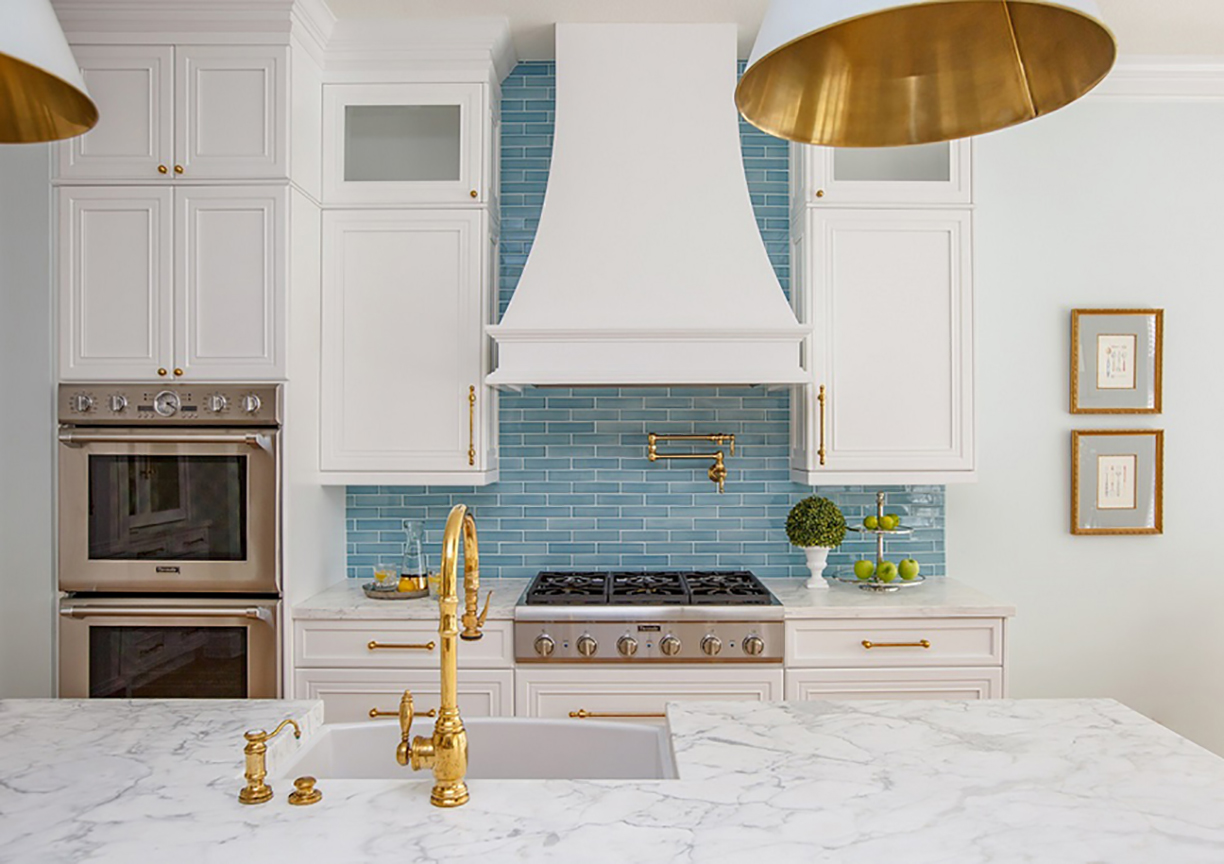
Image courtesy of Constance Riik
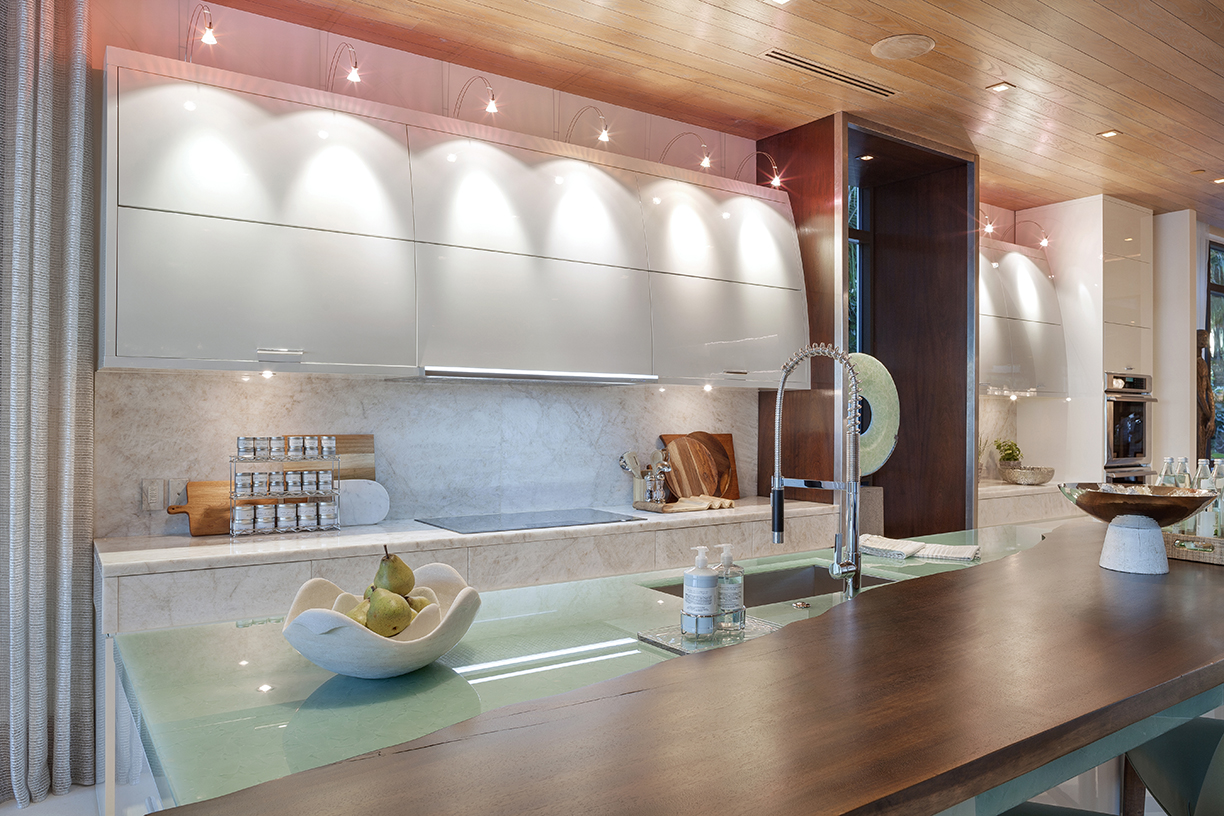
Image courtesy of Marc Thee
The national winner of the Original Innovator/Out of the Box Space will receive a $5,000 prize for designing a space outside of the kitchen such as a wet bar, personal gym, wine cellar or game room. The space must have at least two Thermador products.
And for the first time, the Thermador Kitchen Design challenge is including students in the competition. In the Student Concept Kitchen category, one national winner will receive a $5,000 cash prize for designing an exceptional kitchen for a hypothetical client. The space must be a minimum of 200 square feet, include at least three primary Thermador products and cost a maximum of $250,000.
Two more categories are also part of the challenge, including the Designer’s Choice, which will be chosen at the gala and receive a $5,000 cash prize, and the Fan Favorites category, in which five winners will be selected in a separate contest held in 2021 to receive a $1,000 cash prize each.
By breaking boundaries and the status quo in terms of kitchen design, vision and creativity, Thermador is allowing for others to do the same, creating bold ideas and bringing them to life.
Interior design experts predict that more dramatic kitchens — featuring darker wall colors, cabinets and countertops — will take over 2018.
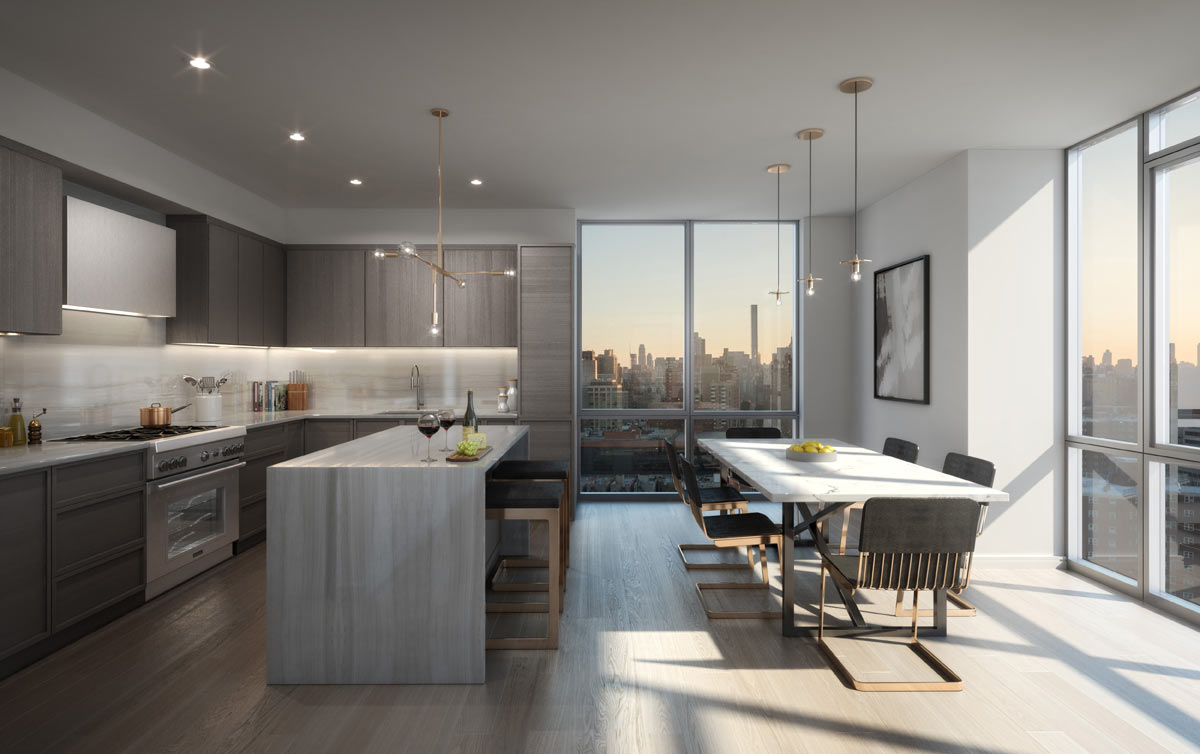
Photo courtesy of Volley
Each year marks a new design trend, especially in kitchens. Dark kitchens are now the luxury seal of approval for home design. Interior design experts quoted in Vogue and ELLE Décor predicted that white kitchens have reached the peak of popularity, and to look for darker, more dramatic kitchens — whether it be the wall color, cabinets and/or countertops.
Below is a list of luxury developments that are already taking note of these dark, moody kitchen design trends:
Interior Designer, Kimberly Peck, masterfully included Italian composite matte black cabinets for the grand, open kitchens at 62-66 North Third Street, a luxury condominium in the heart of Williamsburg. This modern and sleek design element offers residents a moodier industrial living space, which reflects the neighborhood’s ambience.
This is a 19-unit boutique property nestled within Miami Beach’s exclusive South of Fifth neighborhood, featuring spectacular interiors by Thomas Juul-Hansen that are guaranteed to inspire. Each residence is equipped with custom kitchen cabinets and Miele appliances that add a touch of dark contrast to the overly used stark white kitchen palate in Miami Beach. Other features include a built-in bottom mount fridge/freezer, fully integrated dishwasher, espresso machine, convection oven, undercounter wine storage and designer fixtures from Vola and Hansgrohe.
Internationally acclaimed furniture designer Holly Hunt’s first-ever residential development, L ‘Atelier is a 24-residence boutique oceanfront luxury high-rise in Miami Beach. Beautifully crafted Luxury Poliform Italian Kitchens, featuring World-Class Gaggenau Appliances with exquisite dark-colored finishes, L’ Atelier’s kitchens are a modern work of art which showcase this new design trend. Residences will be priced from $3.5 million to $25 million and are scheduled to be completed in 2018.
4. 1 Flatbush
Whitehall Interiors added a dark accent wall to the kitchens in this Downtown Brooklyn apartment to complement the lighter cabinets and countertops, as well as add a bit of drama to the rooms.
The spacious kitchens at this Whitehall Interiors-designed luxury condo in Harlem feature darker gray custom oak wood cabinetry to balance the natural light shining in from the floor-to-ceiling windows and the Athens Silver Cream marble backsplash and countertops.
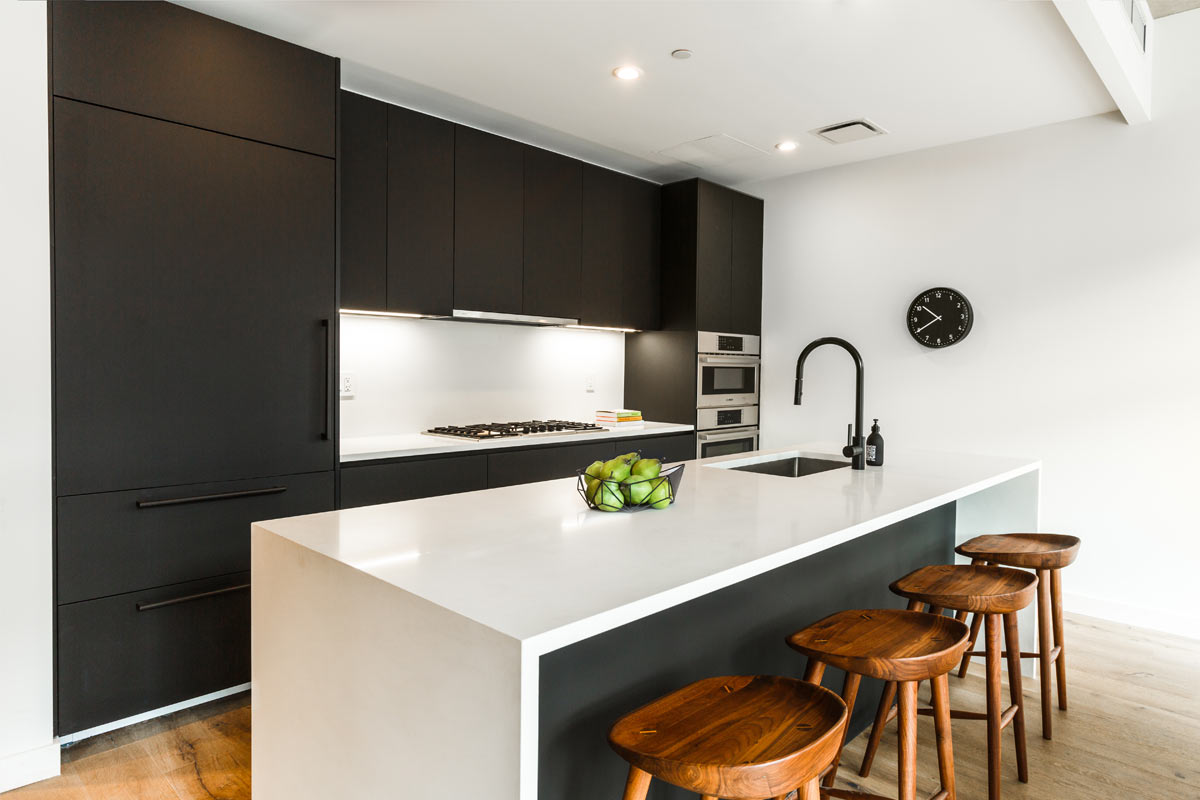
Photo courtesy of MNS
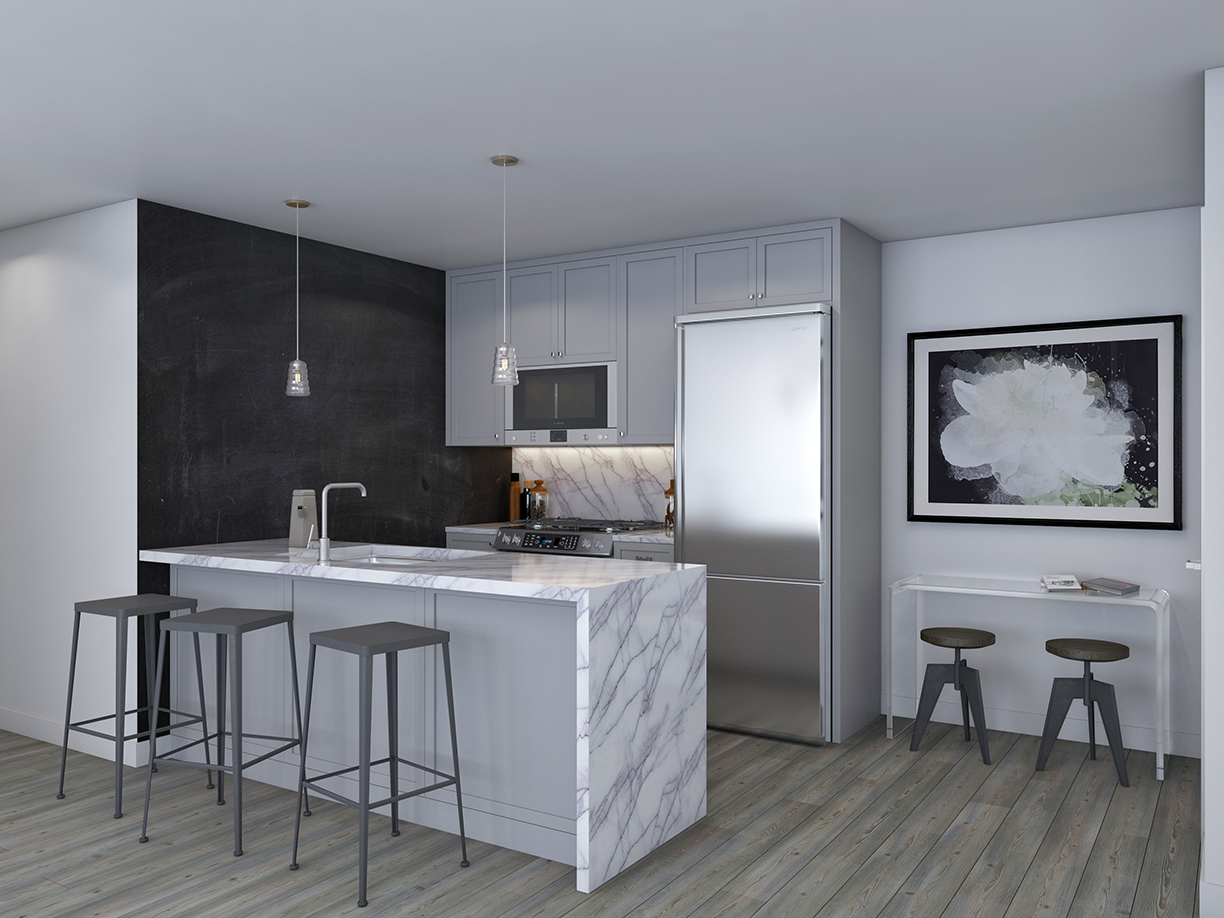
Photo courtesy of MAQE
Timeless Italian styles are reemerging in gourmet kitchens, showcasing bold new colors, artisan craftsmanship, cutting-edge cooking options and updated safety features.
By Stacey Staum
The custom kitchens built by Officine Gullo USA have been referred to as “living sculptures” because of their unique artistic style. “I think beginning from the fact that it’s handmade and custom-made for each client, each item in the kitchen is cast by hand in solid brass. They are an expression of the person’s taste and uniqueness. If someone wants a completely new dimension or customization, it’s built for them, built for their needs, tastes and desires,” says Moreas.
Citing the styles of Florence as the major influences on Officine Gullo USA’s design style, Moreas continues, “Ancient sculptors like Michelangelo even casted in metals, so we use this as an inspiration. After three generations of doing this, we still use the ancient techniques for metalwork that make it unique and special in every way.” By using artisan methods, Officine Gullo USA achieves a traditionally styled cooking device that functions as art.
Valetina Bertazzoni describes Bertazzoni’s appliance style as aesthetic and functional. She explains, “The use of an avant-garde appliance coordinated with elegance and substance in the kitchen is becoming more and more important. We see this as the synchronicity design paradigm. It’s the idea of ‘as well as’ rather than ‘either or.’ Consumers no longer have to decide between a kitchen range only, or a cooktop with wall ovens. They can choose elements that work in synchronicity with one another, and they can choose to customize the kitchen to fit their lifestyle, which may mean a modern kitchen will include a range and a steam oven.”

When it comes to choosing cooking options, availability of features is of paramount importance. What features are most important varies widely from company to company and reflects each establishment’s unique outlook.
Bertazzoni offers features like steam cooking and other non-traditional cooking surfaces as cooking tastes evolve. Bertazzoni explains, “Cooking culture moves relatively slowly, compared to other sectors. Cooking is definitively more related to tradition and habits, and our tastes rely very much on our memory. It will take time before these technologies will reach the same popularity as, for example, gas cooking.” The company continues to offer modern technologies as the tastes and health concerns of consumers evolve over time.
Officine Gullo USA offers a wide variety of professional-grade equipment, providing the highest BTU output available in residential kitchens. The company incorporates blast chillers, vacuum packing machines, steamers, integrated coffee machines and any other appliance that a home chef might need in the kitchen.
On the opposite end of that spectrum, Verona and ILVE stick to more traditional methods.
“We have modern upgrades, but for us, the less electronics, the better. We believe more in Old World cooking: really great convection stands and really powerful ovens.”
While Verona and ILVE stick to more traditional cooking styles, safety upgrades are of the highest importance, as they have modern flame failure safety devices that shut off the gas when the pilot goes out, and ignition delay that prevent little hands from turning on the stove when children are unattended.
Bertazonni also places a high premium on safety. “One of Bertazzoni’s pillars is family, so safety is very important. Among many safety features, our latest is the Induction range which is universally friendly to all ages for its cool-to-the-touch cooktop,” she says.
With this focus on safety, top-of-the-line craftsmanship and an enduring aesthetic, the Italian-style kitchen continues to be the model for luxury in the high-end kitchen market.




















